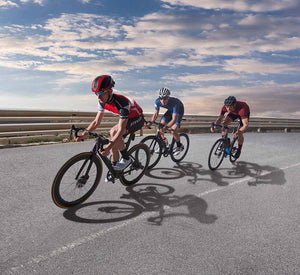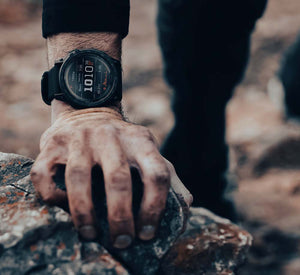![Garmin Approach R10 Space Requirements – How Much Space Do You Need? [Home Golf Simulator Guide – Full Indoor/Outdoor Specs]](http://www.playbetter.com/cdn/shop/articles/R10-space-header.jpg?v=1711399513)
Garmin Approach R10 Space Requirements – How Much Space Do You Need? [Home Golf Simulator Guide – Full Indoor/Outdoor Specs]
Do you have enough space for the super-affordable Garmin R10, a launch monitor that offers access to several golf simulation options? Find out what you need to know below!
The 2021 release of the Garmin Approach R10 was one of the biggest catalysts to the ongoing home golf simulator craze.
Finally, golfers could access accurate data for a price that wasn’t exorbitant. And because the Garmin R10 could be used both outdoors and indoors, droves of golfers turned their dreams of a golf simulator studio into reality.
But people with room-size limitations continued to face challenges. Price was no longer the biggest concern. Now, space has become the biggest obstacle.
Because golf launch monitors like the Garmin Approach R10, which measure data using Doppler radar, need to be set up behind the golf ball, they require a fairly large room.
How large? That’s what we’re discussing here. And while we’re at it, we’ll talk about whether the R10 launch monitor is worth the extra space it requires.
Let’s get into it.
How Much Indoor Space Do You Need for a Garmin Approach R10 Golf Simulator?
The Approach R10 needs to sit 6 to 8 feet behind the golf ball in order to collect data. That’s because this golf launch monitor — and similar devices like the FlightScope Mevo+, Rapsodo MLM2PRO, and Swing Caddie SC4 — use Doppler radar to actually track the flight of the golf ball itself.
Conversely, a photometric-type golf launch monitor like the SkyTrak+, Bushnell Launch Pro, and Foresight Sports GC3 sit next to the golf ball and project what the ball is doing based on the images it collects of the clubface contacting the ball.
So, not only do radar launch monitors need to sit behind the ball, they also need at least 8 feet of space (though more is preferable) in front of the ball so that they can read a handful of revolutions of spin to report accurate ball flight.
Here are our room-size recommendations to comfortably use a Garmin Approach R10 indoors:
- 10 feet wide
- 21 feet deep
- 9 feet tall
Now, you absolutely can use this golf simulator with less room depth than 21 feet. At minimum, you need to set the R10 6 feet behind the ball and have 8 feet in front of it. That means that you can get away with a room that is 14 feet deep. But we recommend setting the Garmin R10 8 feet behind the ball and allowing for 13 feet between the ball and impact screen or net. That’s because that additional space will allow the R10 to more accurately track the golf ball.
As for room width and ceiling height, you really just need enough room to swing your longest golf club without damaging anything. Different sized golfers and different length swings mean that room width and height requirements will vary. So you may need less or more width and height than our recommendations.
So, whether it’s 14 feet or 21 feet of depth, that’s a fairly decent sized room that’s required to use a Garmin Approach R10 as an indoor golf simulator. But that extra space does allow for one very significant advantage. Let’s find out what that is.
Radar vs Camera: Which Type of Golf Launch Monitor Is Best for an Indoor Simulator Studio?
One of the biggest pros of a photometric, or camera-based, golf launch monitor is that, because it sits next to the golf ball rather than behind it, it requires a lot less room depth.
That fact is doubled when you consider that those camera launch monitors don’t need as much space to track the golf ball after you hit it, meaning an indoor golf simulator setup using something like a SkyTrak+ is going to require less space between the golf ball and screen or net than with something like the Garmin Approach R10.
And those space-saving advantages can be huge if you’re trying to build your dream golf simulator studio but are tight on space.
But there’s a distinct indoor golf simulator advantage to a radar-based golf launch monitor like the Approach R10. And that is that it makes playing simulator golf with both righties and lefties at the same time so much better.
With a golf launch monitor that sits to the side of the golf ball, you have to move the monitor back and forth between both sides of the ball if you want to measure both righty and lefty golf shots.
With the Garmin Approach R10, you don’t have to move anything.
So think about if you are going to regularly host both righties and lefties. Not having to interrupt your game to consistently move your golf launch monitor is going to be huge. So if that’s you, and you’ve got the room depth, the Garmin Approach R10 likely makes a lot of sense.
Is the Garmin Approach R10 a Good Indoor Golf Simulator Option?
Consider that before the Garmin Approach R10 came along, you’d have to pay multiple thousands of dollars to get the type of accurate data it’s capable of delivering. Compare that to the $599.99 price of an R10, and it’s no wonder this little launch monitor turned the industry on its head.
Suddenly, the idea of an indoor golf simulator is a reality for a lot of people.
Yes, room depth is going to be an issue for some. But if you do have the space, the luxury of being able to play freely with both righties and lefties together is a very nice benefit for a lot of users.
Also, this golf launch monitor is compatible with:
- TruGolf E6 Connect
- Awesome Golf
- The Golf Club 2019
- Creative Golf 3D
And you get five free E6 simulator courses right out of the box. That’s a pretty stout list of options when it comes to playing simulator golf with a Garmin Approach R10.
So is there really any question that the R10 makes for a good golf simulator option? Not if you’ve got enough space.
About PlayBetter Golf Reviewer Marc Sheforgen
Marc "Shef" Sheforgen is a golf writer whose passion for the game far exceeds his ability to play it well. Marc covers all things golf, from product reviews and equipment recommendations to event coverage and tournament analysis. When he’s not playing, watching, or writing about golf, he enjoys traveling (often golf-related), youth sports coaching, volunteering, and record collecting.





